There's no better way to break out of a city-life routine than getting your socks blown off by the friendliness of the good people of the country-side. I arrived in Venancio Aires, a small town with some of Brazil's biggest tobacco and yerba mate producers, late at night on Friday, 02 May for the annual yerba mate fest. called FENACHIM (Festa Nacional do Chimarrão). It was time to start my journey into the world of yerba mate. I knew that the small-town folk are generally unaware that yerba mate is exported from South America at all and that it would not make real sense to most that a young South African "businessman"/hitch-hiker with a huge backpack was passing through their town as part of a 5 month mission through 4 countries to find the right yerba mate for the South African market. So, my strategy was to introduce myself as a student of journalism on an exchange programme writing an article about yerba mate as part of a Uni. project.
Video of a Slightly Confused Jovi Before Taking on the Gauchos: Good Morning
I arrived at FENACHIM at about 09:00am
. It was a huge fair organised on a huge piece of municipal land with various sections. The main attractions of the 10-day festival were the two large concert stages which featured popular Brazilian musicians and bands, the "Escola do Chimarrão" (School of Mate) and the Gaucho motor-cross championship which was to be held the following day. A bit overwhelmed, I walked into the nearest door to ask for a map and information about the festival. This place turned out to be one of two radio stations covering the event. They noticed my accent, asked what I was doing there, one thing led to another and they invited me for a live broadcast talk with the mayor of the town.
Radio Interview With Subtitles: Radio Interview with Subtitles
Learning To Make Brazilian Chimarrão at The School of Chimarrão: Making Chimarrão
After the first interview the major of the town invited me to his chambers where I met all the people responsible for the event, the radio coverage, the television coverage, yerba mate producers, yerba mate farmers, government officials in the yerba mate industry and a whole bunch more
. One more radio interview and a newspaper interview followed over the three days that I was there. I was treated like a celebrity. After introducing myself as a South African people would generally say something, like, "can you believe it?", and then, in awe they would repeat, "Africa do Sul" (South Africa) with a pause between each word and with emphasis on the first letter of each , "Africa - Do - Sul". The truth is I have never been treated that well by strangers. As from the first day I was offered a place to stay in the house of a couple who were on the organising committee with my own room and bathroom, I ate breakfast, lunch and supper with them everyday and they drove me around to wherever I needed to go. Thank you to everyone who made my experience of Venancio Aires so special, especially Jose Antonio and Rosa.
With the red carpet neatly rolled out for me, all I had to do from that point onward was to walk it. My first encounter was with an agri-economist who studies the yerba mate supply chain among other things. I learned that there are eight sectors in the yerba mate supply chain, starting with the botanist who sells the sprout to the farmer who plants and maintains it and contracts harvesters in the harvest season then sells the raw material to factories where it gets processed and moves onto refineries, packaging plants etc. He explained that the reason for the spike (60%) in the yerba mate price over the last two years was that many yerba mate farmers exited the market due to the low selling price of the raw material between 2009 - 2011
. As such, many farmers felled their yerba mate trees to plant tobacco and soy. In my view, this could be positive for the industry because only the fittest producers and most yerba-mate-loving farmers would have survived and now they are rewarded and motivated by a more favourable price.
Every yerba mate specialist I met would tell me what they had the most knowledge about in the industry, then they would take me and introduce me personally to the next specialist who had knowledge of another sector in the industry. This way I met individuals who work in each step of the yerba mate supply chain, including a visit to one of the biggest yerba mate production plants in Brazil, Madrugada. I started to learn the technicalities of cultivating, harvesting, drying and milling the yerba mate in order to yield the highest quality product. Even though there is much yet to touch, hear, feel and smell this was the beginning of empowering myself as an informed yerba mate buyer for the South Africa market
.
Teasers for the next blog entries to come...
1. Motevideo, Uruguay: TEASER - 01
2. Palmeira das Missoes, Brazil: TEASER - 02
The National Brazilian Yerba Mate Fest.
Tuesday, May 06, 2014
 Venancio Aires, State of Rio Grande do Sul, Brazil
Venancio Aires, State of Rio Grande do Sul, Brazil
Other Entries
-
1Brazilian Hospitality In and Around Favelas
Mar 1651 days prior Sao Paulo, Brazilphoto_camera13videocam 1comment 9
Sao Paulo, Brazilphoto_camera13videocam 1comment 9 -
2Gone Down South
Mar 3037 days prior Porto Alegre, Brazilphoto_camera17videocam 2comment 5
Porto Alegre, Brazilphoto_camera17videocam 2comment 5 -
3Brazilian Students Show Me How To Party
Apr 0432 days prior Pelotas, Brazilphoto_camera16videocam 0comment 0
Pelotas, Brazilphoto_camera16videocam 0comment 0 -
4Settled In
Apr 1125 days prior Porto Alegre, Brazilphoto_camera24videocam 0comment 2
Porto Alegre, Brazilphoto_camera24videocam 0comment 2 -
5Portuguese In The Bag, Time To Hit The Road
Apr 297 days prior Porto Alegre, Brazilphoto_camera30videocam 0comment 3
Porto Alegre, Brazilphoto_camera30videocam 0comment 3 -
6The National Brazilian Yerba Mate Fest.
May 06 Venancio Aires, Brazilphoto_camera27videocam 0comment 3
Venancio Aires, Brazilphoto_camera27videocam 0comment 3 -
76th South American Yerba Mate Congress, Uruguay
May 082 days later Montevideo, Uruguayphoto_camera35videocam 0comment 7
Montevideo, Uruguayphoto_camera35videocam 0comment 7 -
8SHORT ENTRY: Getting Back to Brazil
May 137 days later Santana do Livramento, Brazilphoto_camera1videocam 0comment 3
Santana do Livramento, Brazilphoto_camera1videocam 0comment 3 -
9SHORT ENTRY: Over-Night in Santa Maria
May 148 days later Santa Maria, Brazilphoto_camera1videocam 0comment 0
Santa Maria, Brazilphoto_camera1videocam 0comment 0 -
10High Quality Yerba Mate, Brazil - Part 01
May 159 days later Palmeira das Missões, Brazilphoto_camera42videocam 0comment 4
Palmeira das Missões, Brazilphoto_camera42videocam 0comment 4 -
11VIDEO ENTRY: Valley of Cuias (Gourds)
May 1913 days later Frederico Westphalen, Brazilphoto_camera28videocam 0comment 2
Frederico Westphalen, Brazilphoto_camera28videocam 0comment 2 -
12SHORT ENTRY: Wet, Cold and High
May 2115 days later Marau, Brazilphoto_camera10videocam 0comment 0
Marau, Brazilphoto_camera10videocam 0comment 0 -
13High Quality Yerba Mate, Brazil: PART 02
May 2216 days later Ilópolis, Brazilphoto_camera42videocam 0comment 1
Ilópolis, Brazilphoto_camera42videocam 0comment 1 -
14Getting Technical About Yerba
May 2721 days later Machadinho, Brazilphoto_camera6videocam 0comment 4
Machadinho, Brazilphoto_camera6videocam 0comment 4 -
15Out Of the Mill Into My Gourd
May 2822 days later Barão de Cotegipe, Brazilphoto_camera14videocam 0comment 1
Barão de Cotegipe, Brazilphoto_camera14videocam 0comment 1 -
16Interview at Bom Dia Jornal
May 2923 days later Erechim, Brazilphoto_camera8videocam 0comment 0
Erechim, Brazilphoto_camera8videocam 0comment 0 -
17Another Yerba Mate Fest
May 2923 days later Palmeira das Missões, Brazilphoto_camera11videocam 0comment 0
Palmeira das Missões, Brazilphoto_camera11videocam 0comment 0 -
18Back to Valley of Gourds
Jun 0227 days later Frederico Westphalen, Brazilphoto_camera7videocam 0comment 0
Frederico Westphalen, Brazilphoto_camera7videocam 0comment 0 -
19What Used to be Brazil's 1st Yerba Mate Farm
Jun 0631 days later Santo Ângelo, Brazilphoto_camera19videocam 0comment 0
Santo Ângelo, Brazilphoto_camera19videocam 0comment 0 -
20Boarder Crossing from Brazil to Argentina
Jun 0934 days later Porto Xavier, Brazilphoto_camera5videocam 0comment 0
Porto Xavier, Brazilphoto_camera5videocam 0comment 0 -
21Ancient Secrets of the Good Herb
Jun 1035 days later Apostoles, Argentinaphoto_camera8videocam 0comment 0
Apostoles, Argentinaphoto_camera8videocam 0comment 0 -
22I Had to Jump From a Moving Bus
Jun 1439 days later Encarnacion, Paraguayphoto_camera4videocam 0comment 1
Encarnacion, Paraguayphoto_camera4videocam 0comment 1 -
23This Yerba Is Coming to South Africa
Jun 1439 days later Bella Vista, Paraguayphoto_camera16videocam 0comment 1
Bella Vista, Paraguayphoto_camera16videocam 0comment 1
Comments
2025-05-22
Comment code: Ask author if the code is blank

 Venancio Aires, State of Rio Grande do Sul, Brazil
Venancio Aires, State of Rio Grande do Sul, Brazil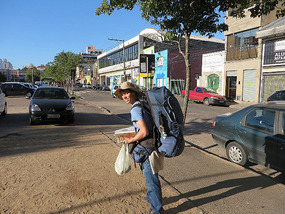

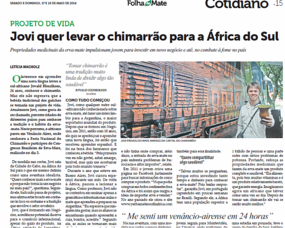
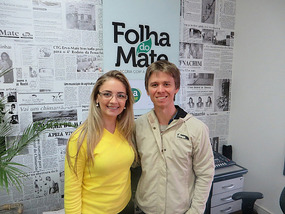




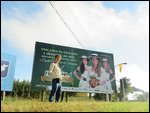
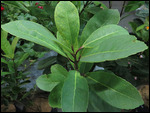
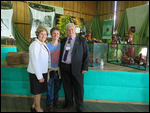
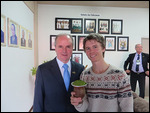
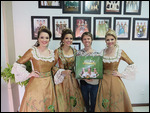
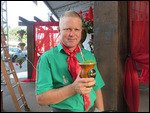
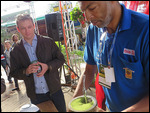
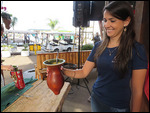

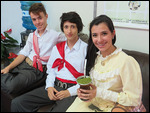

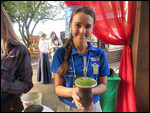

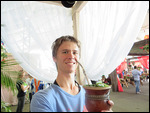
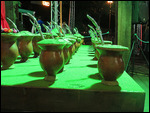
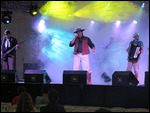
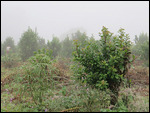
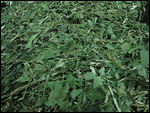
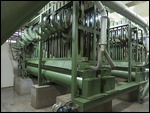
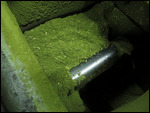
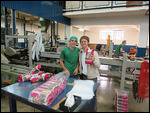
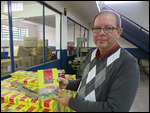
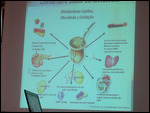
Monika
2014-05-18
No subtitles with interview but pretended I understood every word
Excellent stuff, Jovald! Think we should get a South Africa article as well!
Travel well - stay safe!
Monika
2014-05-18
Aaahhh, but perhaps it is because I didn't read your previous blog first... Captions activated!
Richard Kane
2014-05-23
Awesome epic and more... great work mate! Post pics of the Guarani and the reductions por favor!!!